Ventura, CA Pollen and Allergy Report for Summer 2023
Pollen Allergy Trends in Ventura, CA
When is pollen lowest in Ventura, CA?

February
Lowest month total PPM
Avg. PPM
When is pollen highest in Ventura, CA?

April
Highest month total PPM
Avg. PPM
How does pollen in Ventura, CA compare to California?
Ventura has a lower average PPM than the state of California.
Ventura yearly avg PPM:
California yearly avg PPM:
How does pollen in Ventura, CA compare to the USA?
Ventura has a lower average PPM than the USA.
Ventura yearly avg PPM:
USA yearly avg PPM:
Is pollen worse this year in Ventura, CA?
Spring 2023 was worse than spring 2022.
Spring 2023 PPM:
Spring 2022 PPM:
Average PPM in Ventura, CA
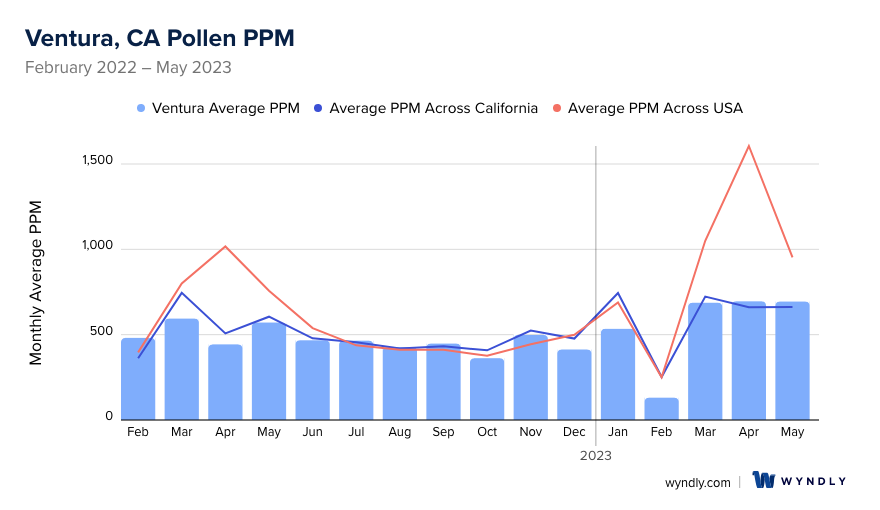
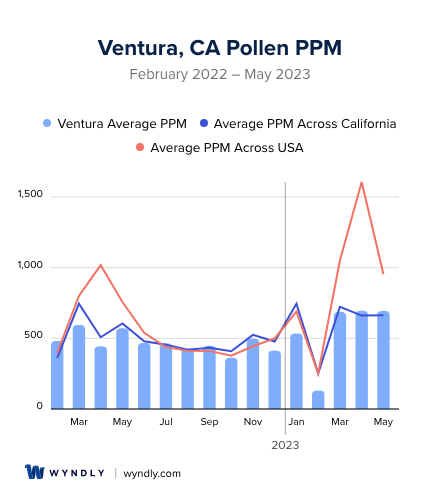
Ventura, CA Pollen and Allergy Breakdown by Month
Grass
When is grass pollen highest in Ventura, CA?
May has the highest grass pollen in Ventura, CA with an average PPM of
When is grass pollen lowest in Ventura, CA?
December has the lowest grass pollen in Ventura, CA with an average PPM of
Tree
When is tree pollen highest in Ventura, CA?
March has the highest tree pollen in Ventura, CA with an average PPM of
When is tree pollen lowest in Ventura, CA?
August has the lowest tree pollen in Ventura, CA with an average PPM of
Weed
When is weed pollen highest in Ventura, CA?
November has the highest weed pollen in Ventura, CA with an average PPM of
When is weed pollen lowest in Ventura, CA?
February has the lowest weed pollen in Ventura, CA with an average PPM of
Ventura, CA Pollen Monthly Breakdown by Pollen Type
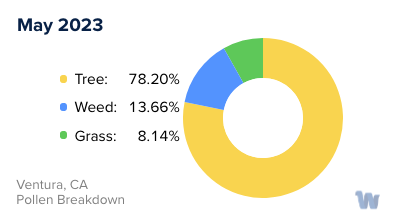
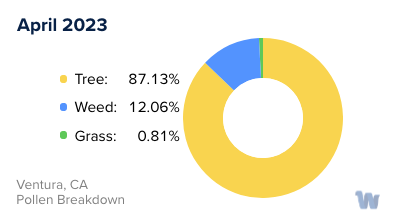
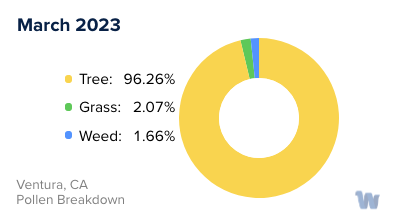
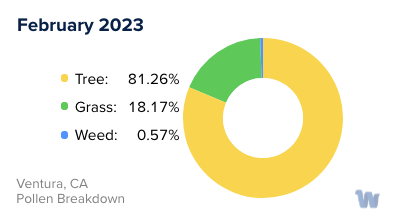
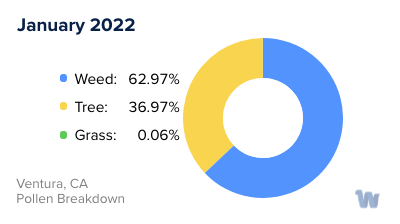
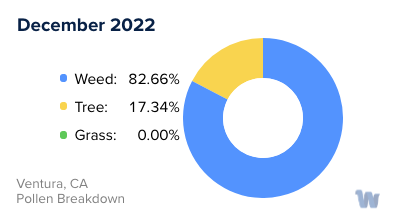
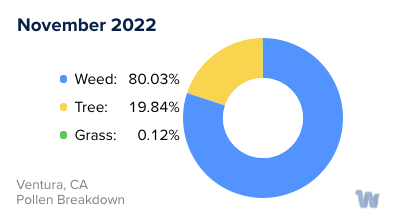
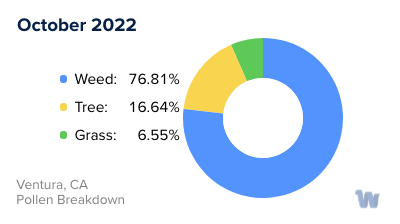
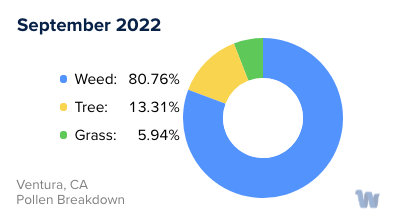
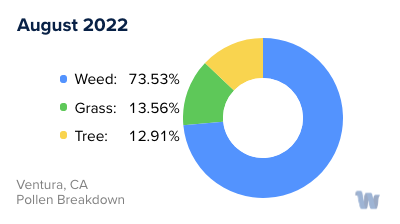
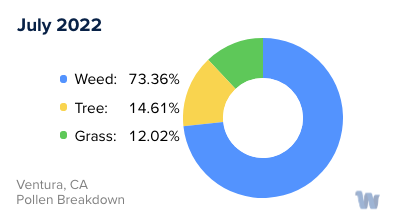
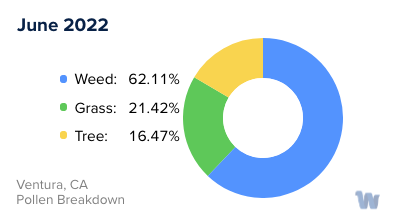
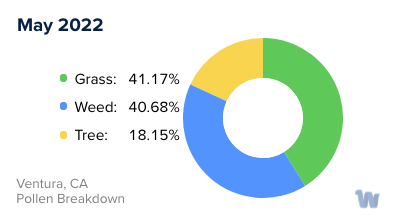
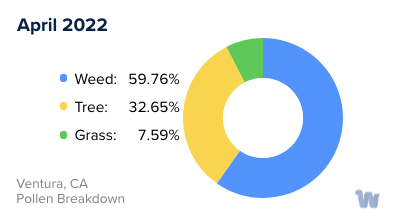
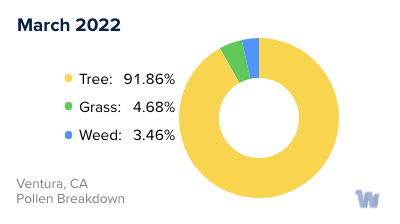
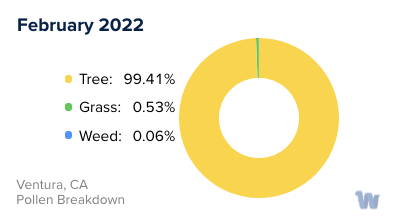
Pollen and Hay Fever in Ventura, CA
In the picturesque city of Ventura, California, with its idyllic beaches and balmy weather, pollen allergies and hay fever can sometimes put a damper on the outdoor fun. Pollen allergies, often referred to as hay fever or allergic rhinitis, are an immune response to the tiny grains released by plants for fertilization. In Ventura, the various flora contributes to different types of pollen which can trigger these allergies.
One of the most prevalent types of pollen in Ventura is tree pollen. Trees such as oak, pine, and olive are bountiful in the region, and they typically release their pollen in the spring. During this season, residents and visitors with sensitivities may experience the classic symptoms of hay fever, such as sneezing, nasal congestion, and itchy eyes.
As spring transitions into summer, grass pollen takes center stage. The lush lawns and green spaces in Ventura are mainly comprised of Bermuda, ryegrass, and Kentucky bluegrass. These grasses release pollen into the air, which can also cause allergic reactions.
Furthermore, in late summer and early fall, weed pollen, particularly from plants like sagebrush and ragweed, becomes more prominent. Though ragweed is not native to California, it has found its way to the Golden State and thrives in the temperate climate of Ventura.
Living or visiting Ventura is an enchanting experience, but it's essential to be mindful of the varying pollen seasons. Being aware of the types of pollen in the air and their respective peaks can help individuals with allergies make informed decisions about their outdoor activities, ensuring a pleasant time in this beautiful coastal city.

